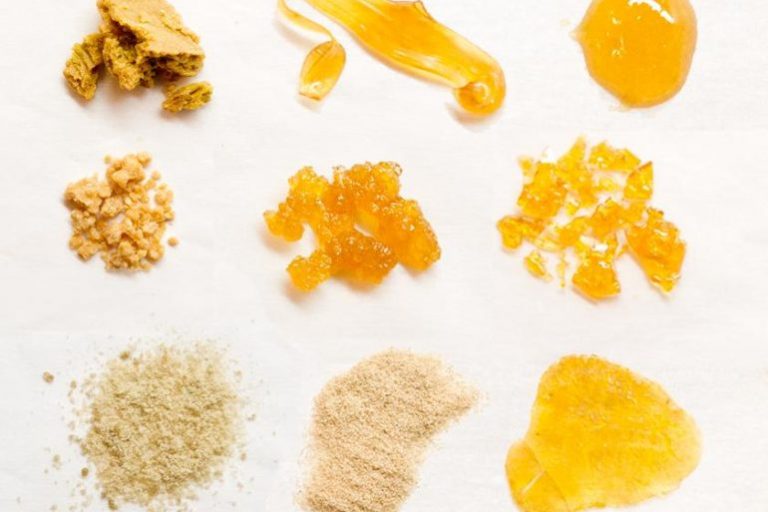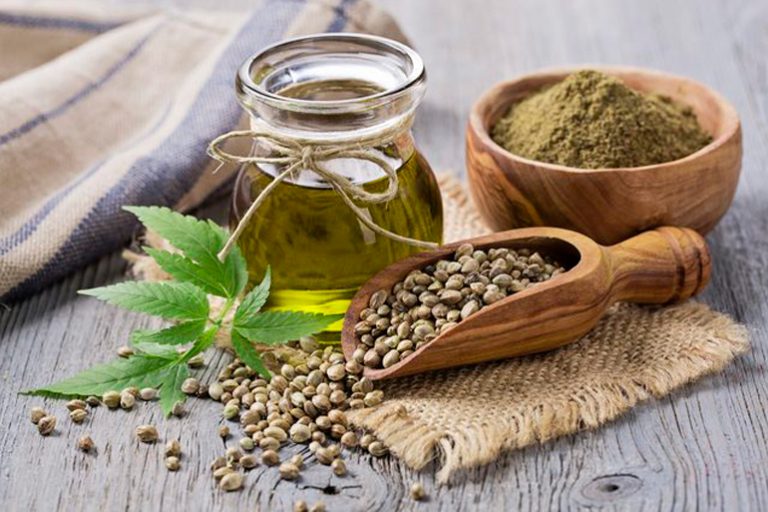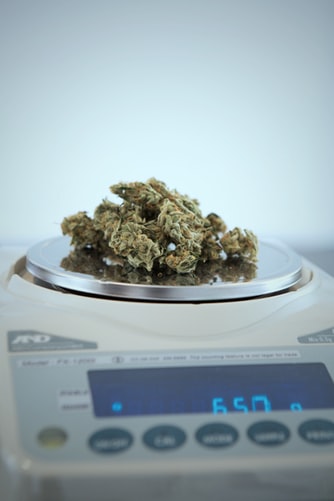I recently entered a large-scale cannabis dispensary, where on its menu there was a dizzying array of acronyms and percentages advertised: THC, CBD, THCa, CBDa, CBG, terpenes… Certainly, too much to look at. I just wanted what I came for, but instead, I was subjugated to a confusing list of chemicals that I really didn’t have a clear understanding of.
There was no brochure or info-packet to read before arriving at the counter, and the after-work rush-hour line was growing long and agitated. So, as a result of not wanting to literally study the menu with a glossary of weed-related terms, I reached the counter and naively told the budtender, “I’d like your strain with the highest THC percentage please,” simply seeking what I thought was the most bang for my buck.
To which he replied, maybe in unknowing spite, “Oh the Chemdawg. Good choice, it has a really nice terpene profile.”
I left the dispensary with my expensive eighth and more questions than any average shopping trip should evoke. As a result of not feeling too complaisant about my ignorance, I thought I would take the opportunity to better inform myself on what these things actually meant, what they did, and which ones related to potency. Is THC the only cannabinoid responsible for potency? Do any of the other cannabinoids even matter? Hopefully my research and collection of information in this article will provide you with the capability to make more informed decisions when purchasing your cannabis products.
RELATED: WHAT TO KNOW BEFORE BUYING CANNABIS FROM A CALIFORNIA DISPENSARY
THC and CBD

Let’s begin with the basics and describe what THC and CBD actually are… Simply put, tetrahydrocannabinol (THC) and cannabidiol (CBD) are two chemicals found within the actual cannabis plant. These chemicals are known as cannabinoids and scientists have identified about 110 other cannabinoids in the cannabis plant as well (like the ones mentioned above and the ones found in the image on the left.) THC and CBD are the two main active cannabinoids, but all of them possess the ability to act on natural sensors we have in our bodies properly called cannabinoid receptors.
While many of the cannabinoids exist in very small percentages in the cannabis plant, theoretically each cannabinoid is responsible for a measurable effect. Only THC is responsible for creating the euphoric high we associate with using cannabis, but other cannabinoids, like CBD and Cannabigerol (CBG,) have non-psychoactive effects such as reducing inflammation, lessening anxiety, fighting cancer, helping to curb nausea and a whole host of other great benefits. There are even some cannabinoids that are responsible for “insecticidal properties” and these in turn highlight the original reason the plant contains these chemicals in the first place; for protection.
Unfortunately, there is limited research regarding the effects of each individual cannabinoid. Yet, as the legality of cannabis and hemp shift and their usage becomes more commonplace, research into these chemicals is sure to increase.
Terpenes
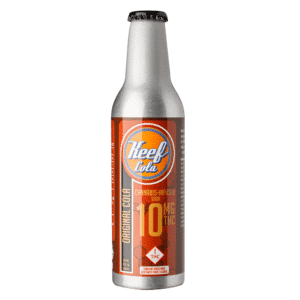
To help me better understand what terpenes are, I had the pleasure of interviewing Erik Knutson, Chief Executive Officer of Keef Brands, a company that produces cannabis-infused beverages and edibles. When questioned what terpenes actually are in layman’s terms, Knutson replies by saying, “Terpenes are a volatile compound derived from a number of plants and are the primary driver behind the scent of Cannabis. In addition to smell, terpene profiles are responsible for the primary effects of cannabis. Each variety of Cannabis has a relatively unique terpene profile.” In other words, terpenes are aromatic oils that supply cannabis with distinctive flavors and scents, and these can actually be extracted to make products.
This led to more curiosity as to how terpenes were extracted from cannabis and what that actually entailed. In order to harness the plant’s terpenes, Knutson states, “There are a number of ways terpenes can be extracted from Cannabis. The most common form of extraction and isolation is done via ethanol, followed by molecular distillation.” In this method, the terpenes are isolated and extracted using low heat and pressure, in combination with the ethanol.
On a last note, Knuston concludes the interview by mentioning that “Terpenes truly dictate the quality of not only flower but all extracts.”
RELATED: TERPENES 101: THE DRIVER BEHIND THE FLAVORS AND BENEFITS IN CANNABIS
Potency and Testing
The main component contributing to a strain’s potency is its THC percentage; although learnaboutmarijuanawa.org claims that THC works “In combination with other cannabinoids” to give cannabis its potency, those cannabinoids are not named within the text. So, after an exhaustive research reconnaissance, I feel confident in concluding that if you are looking for the most potent weed, looking at the THC content is the only thing that matters. But I say that with a caveat due to one interesting article I came across proclaiming:
“The problem with selecting cannabis strains based solely on the THC content is much like stomaching the worst swill at the bar just because it has a high alcoholic percentage. By doing this, the consumer is robbing themselves of not only the rich scents and flavors of the strain, but also missing out on the beneficial effects that can be delivered through a strain’s specific terpene profile.”
I can see the point of this, but nonetheless stand resolute in my original request of the strain with the highest THC content available…
On a final note, I wanted to find out how THC is tested for and if there is a standard procedure or agency that controls testing and calculation. According to TITLE 16 OF THE CALIFORNIA CODE OF REGULATIONS, SECTION 5715 “All cannabis harvested on or after 1/1/2018 and all cannabis products manufactured on or after 1/1/2018, shall be tested.” Furthermore, “A laboratory shall test for and report measurements for the following cannabinoids: (1) THC; (2) THCA; (3) CBD; (4) CBDA; (5) CBG; and (6) CBN.” The law dictates that a third-party laboratory needs to conduct the test, below is the California Bureau of Cannabis Control’s chart of required chemicals that laboratories need to test for.
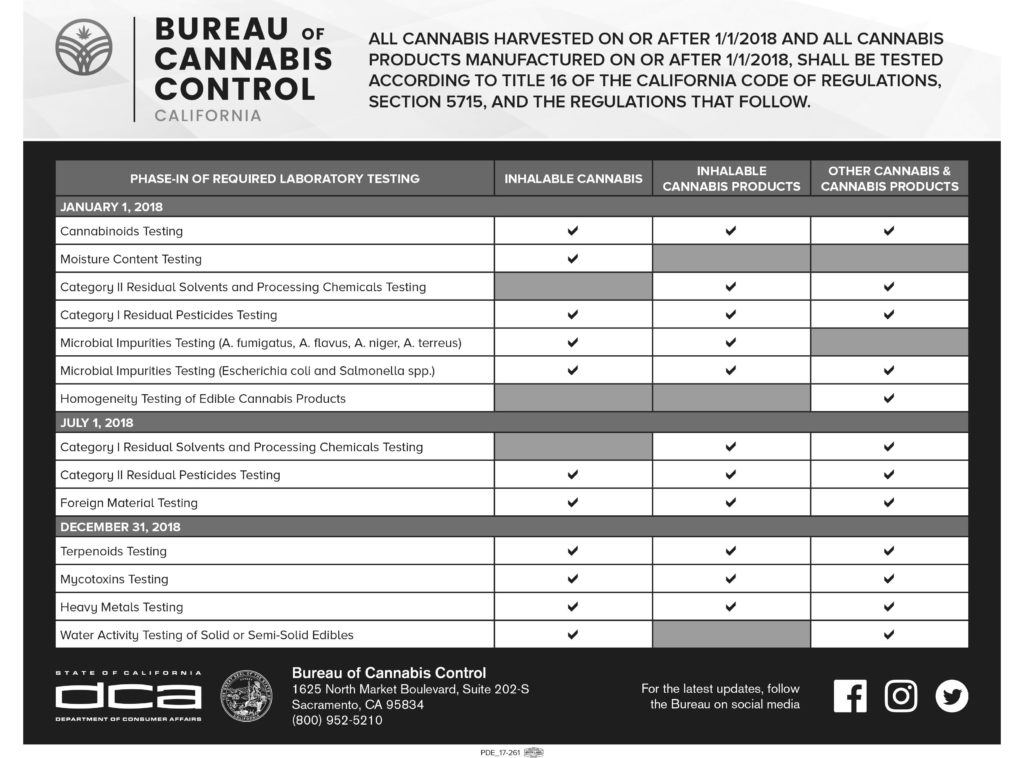
The reasoning behind testing of this caliber is to “To protect consumers,” according to “The Ultimate Guide to California Cannabis Lab Testing Regulations.”
Conclusions
The information that I have provided regarding the topic of cannabinoids, testing, potency, and terpenes will hopefully better equip you with the knowledge to make more informed decisions when purchasing your cannabis products. Whether in California or abroad, this article can serve as not only a loose set of guidelines but perhaps as a cultivator for an internal dialog where you ask yourself, “What is it that I do not fully understand about cannabis and what matters to me when I consume my cannabis?”


